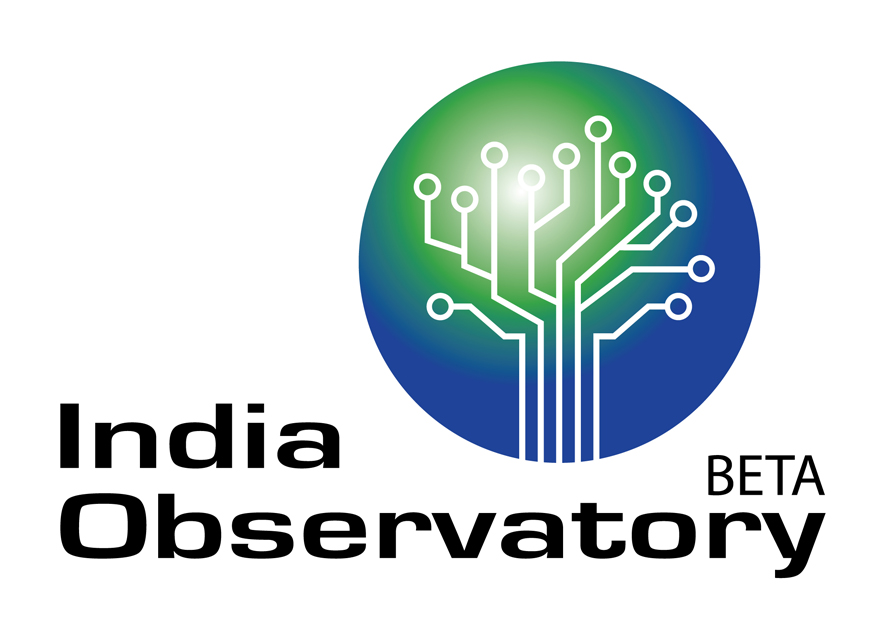About Data Platform
Data Platform
Data platform is the backbone of the India Observatory initiative. It houses the several datasets with meta-data catalogue. It provides contextual insights and enables spatial and temporal analysis for better diagnosis of developmental trends. Further, it helps various stakeholders in taking informed decisions by presenting the data in a user-friendly manner through infographics, visualizations and tools.
Salient Features
Breadth and depth of data: The data sets available on data platform have been pooled from various secondary sources. These datasets are available from 1990’s onwards and for some states from 1960’s onwards.
Interdisciplinary convergence: Data platform allows easy exploration of social, economic and ecological data prompting the user to analyse through an interdisciplinary lens.
Compare Maps: Allows creation of two maps on the same screen in split-screen mode for easy comparison. Users can select same or different parameters, time-period and administrative units for both the maps.
Comparative Visualisation: Allows the user to overlay multiple data layers and decrease opacity of the layer on top thus enabling visualisation of comparative parameters on the same map.
Export map: allows the user to download maps in PDF format.
Location At A Glance: Provides a quick summary on the socio-economic and ecological parameters of any chosen state/district/block in India in an easy to understand info-graphic format.
GPDP Profile: The GPDP profile is another infographic profile that the platform offers. It presents Mission Antyodaya data in a visual format.
Examine change through temporal datasets: Provides temporal data layers to view and compare data over a period of time. A ‘time slider’ allows setting a time period to view historical data. Additionally, the trend analysis feature allows the user to visualize temporal trends in tabular or graphical format.
Analytics: The analytics feature provides the option to choose parameters, view them in tabular format, perform statistical operations like mean, median, mode etc. on them and visualize them in the form of bar graphs, pie charts etc.
Measure distance and area: The platform allows the user to measure the distance between two places as well as area, using the measuring tool.
Multilingual: Auto-translation of content in 12 Indian languages, helping maximize its reach to different parts of the country.
How Data Platform works
The data platform provides info-graphic profiles, maps and other visualizations that can initiate discussions on context-specific developmental trends, among community members. Useful insights can be drawn from these visualizations by comparing one region with another, analyzing the changes that have occurred in a particular region over a period of time and finding correlations between parameters. These discussions aid in promoting decentralized decision making by feeding into the Gram Panchayat Development Planning process. The platform helps in the creation of general as well as theme-based atlases from block to state level that further deepen inter-disciplinary as well as regional understanding of the community members. The platform also has the potential to aid in identifying areas to undertake interventions, based on selected criteria. Further, the platform can be used by students, researchers, academicians etc. to undertake statistical analysis for research questions that they might be working on. Hence, the data platform can be used by a wide variety of audience, ranging from Panchayat members, district and block level officials, NGO’s, researchers, academicians etc.
Data sources and Outreach
Data Platform houses over 1600+ parameter layers, broadly classified into three categories namely Social, Economic and Environment. These include vector as well raster geo-spatial layers such as soil, geology, land use, forest types, eco-regions and MODIS, Landsat, Sentinel satellite images etc. They also include non-spatial information such as demographic trends, local flora and fauna, infrastructure, amenities etc. These datasets have been compiled for the past from numerous sources such as Census of India, Socio-economic Caste Census, Niti Aayog, Forest Survey of India, Department of Agriculture Cooperation (DACNET), International Water Management Institute (IWMI), Geological Survey of India, Central Ground Water Board (CGWB), Bhuvan-National Remote Sensing Centre (NRSC) etc.
To make this data available to all stakeholders, access is freely provided to individuals, organisations, researchers and scholars across India. Collaborations with universities and research partners is being actively sought to procure new analytics that can be integrated in the Platform.
